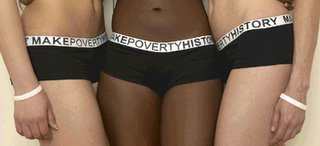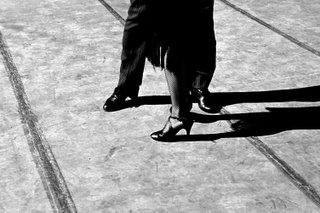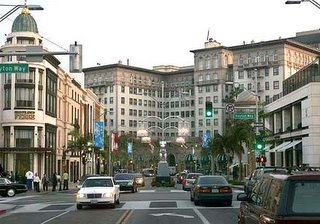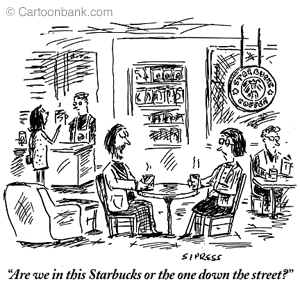Note from the blog editor: Two articles are included in today’s blog. The second story is from the New Yorker also related to knowing the situation in Iraq. It is a wonderful example of usage of today’s communication skills and technology. The first story really arose my integrity as a trained journalist. After all, I don’t do anything nearly to what Farris Hassan did. Today’s headline here, should really be “Baghdad and knowing Baghdad.”
Note of the Caption: Farris Hassan, a 16-year-old-teen from Fort Lauderdale. Fla., poses for a portrait at a hotel, backdropped by the Ramadan 14th mosque in Baghdad, Iraq, Wednesday Dec. 28, 2005. [AP]
link to the captionBAGHDAD, Iraq – Maybe it was the time the taxi dumped him at the Iraq-Kuwait border, leaving him alone in the middle of the desert. Or when he drew a crowd at a Baghdad food stand after using an Arabic phrase book to order. Or the moment a Kuwaiti cab driver almost punched him in the face when he balked at the $100 fare.
But at some point, Farris Hassan, a 16-year-old from Florida, realized that traveling to Iraq by himself was not the safest thing he could have done with his Christmas vacation.
And he didn't even tell his parents.
Hassan's dangerous adventure winds down with the 101st Airborne delivering the Fort Lauderdale teen to the U.S. embassy in Baghdad, which had been on the lookout for him and promises to see him back to the United States this weekend.
It begins with a high school class on "immersion journalism" and one overly eager — or naively idealistic — student who's lucky to be alive after going way beyond what any teacher would ask.
As a junior this year at a Pine Crest School, a prep academy of about 700 students in Fort Lauderdale, Hassan studied writers like John McPhee in the book "The New Journalism," an introduction to immersion journalism — a writer who lives the life of his subject in order to better understand it.
Diving headfirst into an assignment, Hassan, whose parents were born in Iraq but have lived in the United States for about 35 years, hung out at a local mosque. The teen, who says he has no religious affiliation, added that he even spent an entire night until 6 a.m. talking politics with a group of Muslim men, a level of "immersion" his teacher characterized as dangerous and irresponsible.
The next trimester his class was assigned to choose an international topic and write editorials about it, Hassan said. He chose the Iraq war and decided to practice immersion journalism there, too, though he knows his school in no way endorses his travels.
"I thought I'd go the extra mile for that, or rather, a few thousand miles," he told The Associated Press.
Using money his parents had given him at one point, he bought a $900 plane ticket and took off from school a week before Christmas vacation started, skipping classes and leaving the country on Dec. 11.
His goal: Baghdad. Those privy to his plans: two high school buddies.
Given his heritage, Hassan could almost pass as Iraqi. His father's background helped him secure an entry visa, and native Arabs would see in his face Iraqi features and a familiar skin tone. His wispy beard was meant to help him blend in.
But underneath that Mideast veneer was full-blooded American teen, a born-and-bred Floridian sporting white Nike tennis shoes and trendy jeans. And as soon as the lanky, 6-foot teenager opened his mouth — he speaks no Arabic — his true nationality would have betrayed him.
Traveling on his own in a land where insurgents and jihadists have kidnapped more than 400 foreigners, killing at least 39 of them, Hassan walked straight into a death zone. On Monday, his first full day in Iraq, six vehicle bombs exploded in Baghdad, killing five people and wounding more than 40.
The State Department strongly advises U.S. citizens against traveling to Iraq, saying it "remains very dangerous." Forty American citizens have been kidnapped since the war started in March 2003, of which 10 have been killed, a U.S. official said. About 15 remain missing.
"Travel warnings are issued for countries that are considered especially dangerous for Americans, and one of the strongest warnings covers travel to Iraq," said Elizabeth Colton, a spokeswoman for the U.S. Embassy in Baghdad.
Colton said the embassy's consular section can provide only limited help to Americans in Iraq, though once officials learn of a potentially dangerous situation every effort is made to assist.
Inside the safety of Baghdad's Green Zone, an Embassy official from the Hostage Working Group talked to Hassan about how risky travel is in Iraq.
"This place is incredibly dangerous to individual private American citizens, especially minors, and all of us, especially the military, went to extraordinary lengths to ensure this youth's safety, even if he doesn't acknowledge it or even understand it," a U.S. official who wasn't authorized to speak to the media said on condition of anonymity.
Hassan's extra-mile attitude took him east through eight time zones, from Fort Lauderdale to Kuwait City. His plan was to take a taxi across the border and ultimately to Baghdad — an unconventional, expensive and utterly dangerous route.
It was in Kuwait City that he first called his parents to tell them of his plans — and that he was now in the Middle East.
His mother, Shatha Atiya, a psychologist, said she was "shocked and terrified." She had told him she would take him to Iraq, but only after the country stabilizes.
"He thinks he can be an ambassador for democracy around the world. It's admirable but also agony for a parent," Atiya said.
Attempting to get into Iraq, Hassan took a taxi from Kuwait City to the border 55 miles away. He spoke English at the border and was soon surrounded by about 15 men, a scene he wanted no part of. On the drive back to Kuwait City, a taxi driver almost punched him when he balked at the fee.
"In one day I probably spent like $250 on taxis," he said. "And they're so evil too, because they ripped me off, and when I wouldn't pay the ripped-off price they started threatening me. It was bad."
It could have been worse — the border could have been open.
As luck would have it, the teenager found himself at the Iraq-Kuwait line sometime on Dec. 13, and the border security was extra tight because of Iraq's Dec. 15 parliamentary elections. The timing saved him from a dangerous trip.
"If they'd let me in from Kuwait, I probably would have died," he acknowledged. "That would have been a bad idea."
He again called his father, who told him to come home. But the teen insisted on going to Baghdad. His father advised him to stay with family friends in Beirut, Lebanon, so he flew there, spending 10 days before flying to Baghdad on Christmas.
His ride at Baghdad International Airport, arranged by the family friends in Lebanon, dropped him off at an international hotel where Americans were staying.
He says he only strayed far from that hotel once, in search of food. He walked into a nearby shop and asked for a menu. When no menu appeared, he pulled out his Arabic phrase book, and after fumbling around found the word "menu." The stand didn't have one. Then a worker tried to read some of the English phrases.
"And I'm like, 'Well, I should probably be going.' It was not a safe place. The way they were looking at me kind of freaked me out," he said.
It was mid-afternoon on Monday, after his second night in Baghdad, that he sought out editors at The Associated Press and announced he was in Iraq to do research and humanitarian work. AP staffers had never seen an unaccompanied teenage American walk into their war zone office. ("I would have been less surprised if little green men had walked in," said editor Patrick Quinn.)
Wearing a blue long-sleeve shirt in addition to his jeans and sneakers, Hassan appeared eager and outgoing but slightly sheepish about his situation.
The AP quickly called the U.S. embassy.
Embassy officials had been on the lookout for Hassan, at the request of his parents, who still weren't sure exactly where he was. One U.S. military officer said he was shocked the teen was still alive. The 101st Airborne lieutenant who picked him up from the hotel said it was the wildest story he'd ever heard.
Hassan accepted being turned over to authorities as the safest thing to do, but seemed to accept the idea more readily over time.
Most of Hassan's wild tale could not be corroborated, but his larger story arc was in line with details provided by friends and family members back home.
Dangerous and dramatic, Hassan's trip has also been educational. He had tea with Kuwaitis under a tent in the middle of a desert. He says he interviewed Christians in south Lebanon. And he said he spoke with U.S. soldiers guarding his Baghdad hotel who told him they are treated better by Sunni Arabs — the minority population that enjoyed a high standing under Saddam Hussein and are now thought to fuel the insurgency — than by the majority Shiites.
His father, Redha Hassan, a doctor, said his son is an idealist, principled and moral. Aside from the research he wanted to accomplish, he also wrote in an essay saying he wanted to volunteer in Iraq.
He said he wrote half the essay while in the United States, half in Kuwait, and e-mailed it to his teachers Dec. 15 while in the Kuwait City airport.
"There is a struggle in Iraq between good and evil, between those striving for freedom and liberty and those striving for death and destruction," he wrote.
"Those terrorists are not human but pure evil. For their goals to be thwarted, decent individuals must answer justice's call for help. Unfortunately altruism is always in short supply. Not enough are willing to set aside the material ambitions of this transient world, put morality first, and risk their lives for the cause of humanity. So I will."
"I want to experience during my Christmas the same hardships ordinary Iraqis experience everyday, so that I may better empathize with their distress," he wrote.
Farris Hassan says he thinks a trip to the Middle East is a healthy vacation compared with a trip to Colorado for holiday skiing.
"You go to, like, the worst place in the world and things are terrible," he said. "When you go back home you have such a new appreciation for all the blessing you have there, and I'm just going to be, like, ecstatic for life."
His mother, however, sees things differently.
"I don't think I will ever leave him in the house alone again," she said. "He showed a lack of judgment."
Hassan may not mind, at least for a while. He now understands how dangerous his trip was, that he was only a whisker away from death.
His plans on his return to Florida: "Kiss the ground and hug everyone."
Copyright © 2005 The Seattle Times Company
link to the original postingCOLLEGE TRY, BAGHDAD TO SWARTHMORE (the New Yorker)
Issue of 2005-12-26 and 2006-01-02
Posted 2005-12-19
by Ben McGrath
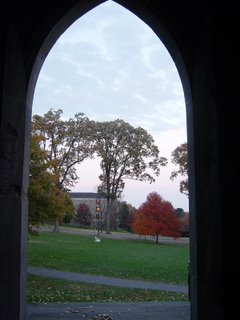 Note of the caption:
Note of the caption: A single adirondack chair poised on Parrish Beach, (Swarthmore College, Swarthmore, PA, USA) (photo by Chris Caruso, November 16, 2005, from
The Daily Gazette)
link to the captionA group of enterprising students a Swarthmore College, in Pennsylvania, ha some advice for the politically disaffected: I you find the media’s Iraq coverag unsatisfactory, pick up the phone. Don’t cal the Times, or CNN, or Rupert Murdoch; call Baghdad. There are a couple of Iraqi phone books available on the Internet, and plenty of interesting people willing to share their stories directly, from six thousand miles away, many of them speaking decent English. When your phone bill starts to get out of hand, try downloading Skype, software that allows two people to talk free, from anywhere in the world, using computer microphones and a headset.
Amelia Templeton, a senior history major, estimates that she has spoken with twenty-five Iraqis over the past year, and now, as she said the other day, “it’s a bad idea to ask me about Iraq unless you plan on listening for a while.” One of the Iraqis she spoke with, a painter named Esam Pasha, who is a grandson of the former Prime Minister Nuri al-Said, has even invited her to visit Baghdad. “I was told that if I came he’d pick me up at the airport,” she said. “Given what that road is like, how dangerous it is going to and from the airport, that’s quite an offer.”
Templeton is one of the editors at War News Radio, a weekly half-hour show broadcast on the Swarthmore campus station, and podcast over the Web, where it draws as many as three thousand listeners a day. The show’s stated aim is to “rediscover the voices of real people” in Iraq. It is supervised by Marty Goldensohn, a thirty-year veteran of public radio, who offered the students this essential kernel of advice: “Mumble with authority.” He also said, “When you call the Pentagon, you just say, as if you were the New York Times, ‘I’m calling from War News Radio.’ You say it as if it were their failing if they haven’t heard of us.”
The students began, two semesters ago, by creating a homemade sound studio, using bulletin boards and egg cartons hung from ceiling pipes. Now, thanks to the college, they’ve got proper acoustic tiling, although space heaters are still required to supplement the building’s old radiator, and the reporters sometimes wear ski jackets and hats while manning the phones. They have secured interviews, in recent weeks, with the C.E.O. of the new Iraqi Stock Exchange, an aspiring filmmaker in Baghdad, and the Sunni politician Adnan Pachachi. In one broadcast, an Iraqi doctor, referring to the mood at the checkpoints, said, “Everybody feels terrified; everything around is horrible, and you expect that you may be killed at any minute.” (His daughter had been shot, he said, by U.S. soldiers.)
Last month, an American expat who runs an FM station in Canberra, Australia, e-mailed the studio and asked for permission to rebroadcast the show. Carleton College has picked up War News Radio as well. And last week Goldensohn was preparing to send out a mailing to more than a thousand other schools, soliciting further interest.
“We thought we were at a disadvantage not being on the ground in Iraq,” Eva Barboni, a junior poli-sci major, said. “But when you hear from reporters there that they can’t even leave their hotels you start to think.” The sound quality afforded by Skype, it turns out, is often better than what can be achieved over the weak landlines in the Green Zone.
“If you’re working for a big American network, with a film crew following you, you’re not going to get out on the streets in Baghdad,” Wren Elhai, a sophomore, said. “We can do a lot from here that the networks can’t do.”
Elhai is the group’s designated pronouncer of Iraqi names and words. “I’m just the one who can do the Iraqi accent best,” he said. “My favorite word, and it’s unfortunate how often you hear it, is ‘corruption.’ Iraqis have that wonderful rolled ‘r.’ ” Elhai was in the process of editing a story about an Iraqi contractor, a frequent victim of government corruption, before heading off to a rehearsal for his a-cappella singing group.
One drawback of the long-distance approach, of course, is that you can’t be sure whom you’re talking to. Templeton, while working on a segment about a typical Iraqi teen-ager, ended up speaking with a father she later came to suspect of being a Baath Party official. She killed the story. “I thought maybe they weren’t the average,” she
said.
Esam Pasha’s offer to pick Templeton up at the airport, meanwhile, remains unfulfilled. “I don’t want to be another American who’s potentially putting the people working with him in danger,” she said.
When not telephoning Iraq, the War News team occupy themselves with critiquing the President’s speeches (Kurt Vonnegut has appeared on the show as a commentator), assessing the ongoing media coverage (“Where are the pictures of shrapnel wounds and weeping mothers that etched the Vietnam War in American minds?”), and interviewing soldiers’ parents. Recently, a reporter, Tevye Kelman, went undercover and visited an Army recruiting station in Philadelphia. Midway through the interview, the recruiter asked Kelman, a senior, when he’d last smoked pot. “Last weekend,” he replied.
link to the original posting





